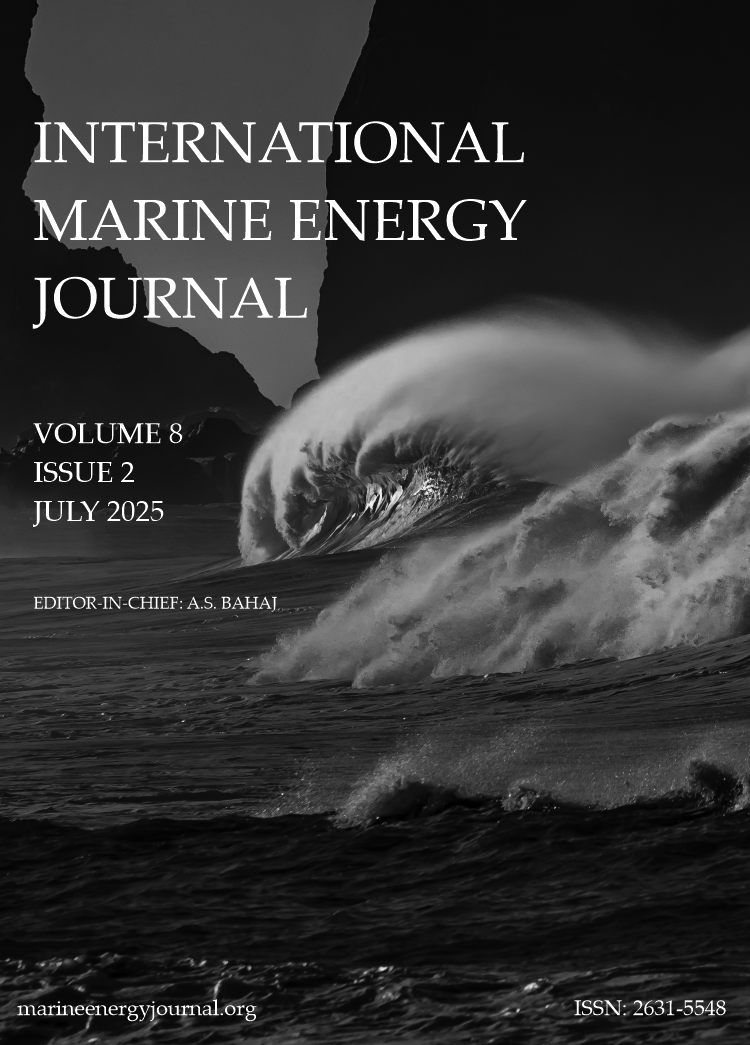Experimental measurements of two elastic taut-slack mooring configurations for the multi-float M4 WEC
DOI:
https://doi.org/10.36688/imej.8.119-125Keywords:
wave energy converter, moorings, extreme waves, experimental testingAbstract
Moorings are a vital and often problematic component of any floating offshore renewable energy system, whether for wind or wave energy conversion, and here we consider the M4 multi-float wave energy converter (WEC) system in a 122 configuration. Previous experimental work has shown elastic cables to reduce extreme snap loads by a factor of about 6 when considering single cables between the bow float and a mooring buoy (hawser), and between the mooring buoy and the bed. Here, we compare results for two alternative configurations designed to reduce the mooring footprint as well as extreme snap loads. Both systems are taut-slack with configuration 1 consisting of a single mooring buoy and configuration 2 with a dual buoy set-up with one submerged in an attempt to reduce loads further. The configurations are experimentally tested in irregular (JONSWAP) wave conditions up to limiting steepness, with run times of 35 minutes at 1:40 scale or about 3.5 hours full scale. Through statistical analysis it is concluded that both mooring configurations offer similar advantages in terms of reduction of peak loads, and display very similar load and motion (hence power) statistics. Configuration 2 displays slightly larger maximum forces yet these occur at significantly lower frequencies (near to the surge natural frequency) with reduced response at the wave frequencies. This demonstrates that subtle changes to mooring line configuration can be used to affect the frequency, and hence number, of loading cycles considerably without affecting power performance.
Downloads
Published
How to Cite
Issue
Section
License
Copyright (c) 2025 Samuel Draycott, Peter Stansby, Gangqiang Li

This work is licensed under a Creative Commons Attribution 4.0 International License.
I the author/we the authors understand that I/we retain copyright over our article. I/we grant a licence to IMEJ to: publish my/our article under the terms of the Creative Commons Attribution (CC BY) License which permits use, distribution and reproduction in any medium, provided the original work is properly cited, and identify IMEJ as the original publisher.


